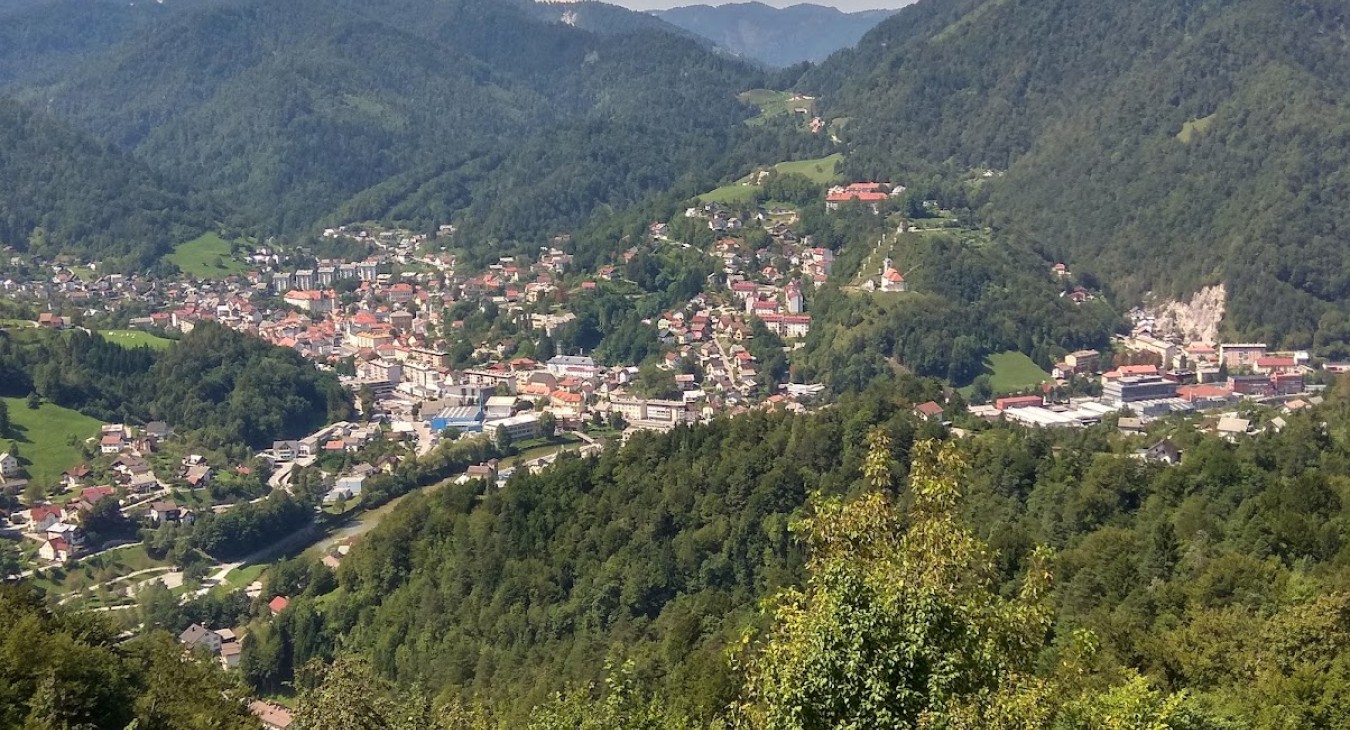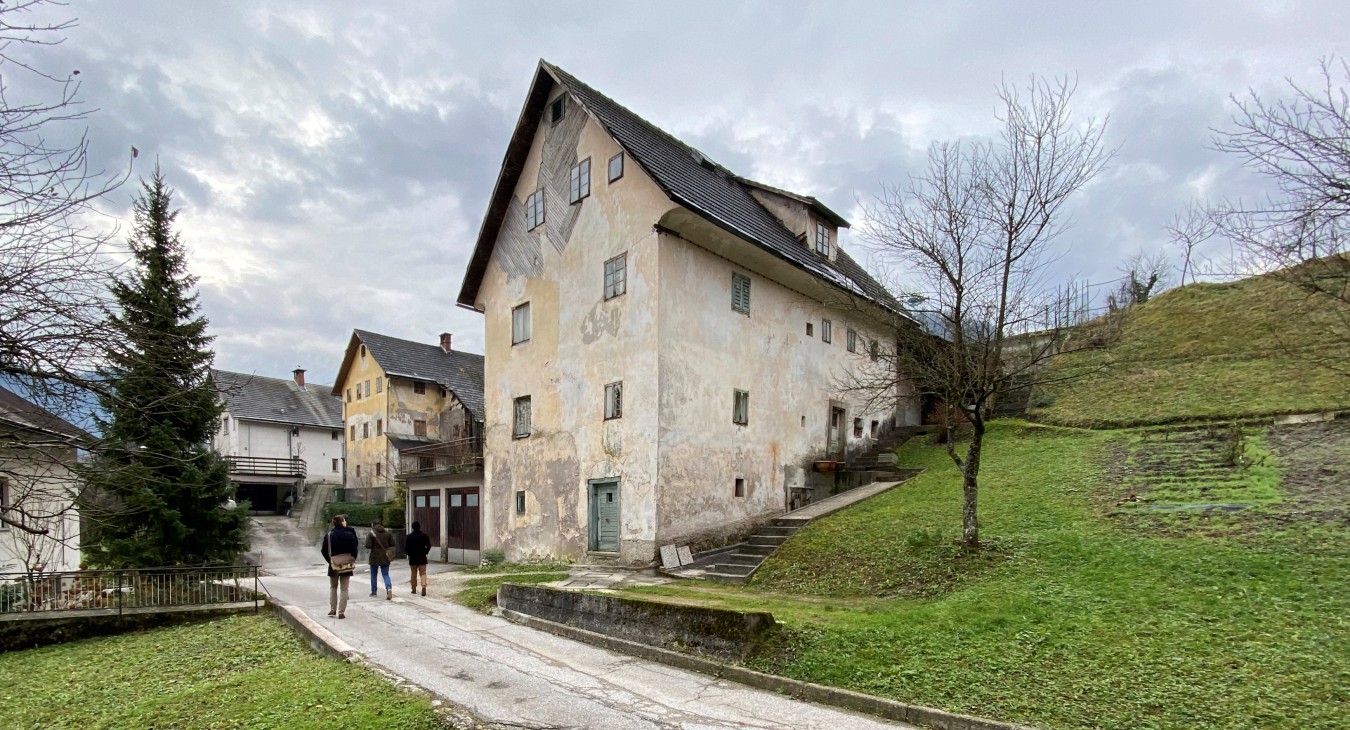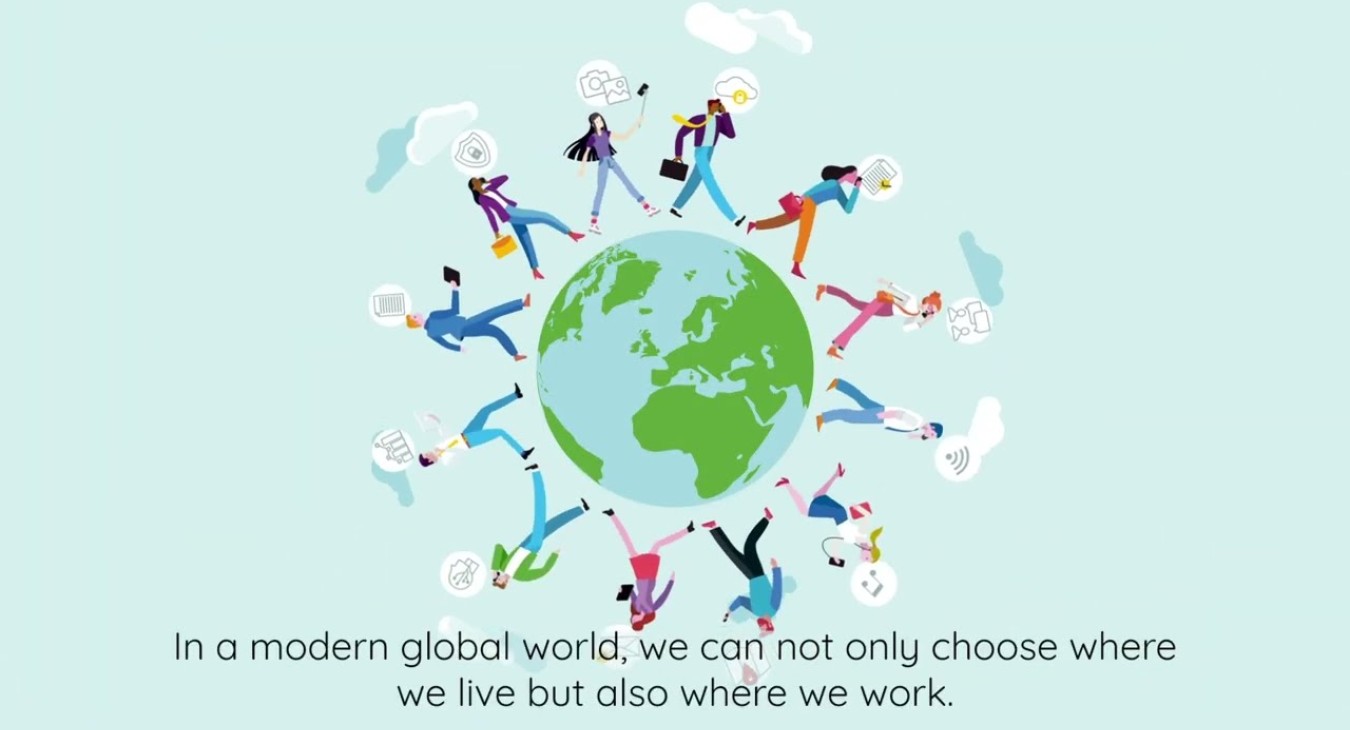Digital nomadism in heritage-rich communities
The 500-year history of Idrija began with the discovery of a rare and valuable liquid metal: mercury. The exciting discovery drew many miners into the valley that soon saw the development of a lively mining settlement, topped with a mining castle Gewerkenegg since 1533. With the discovery of the amalgamation procedure accompanying the discovery of South American silver and gold mines, mercury gained recognition and the Idrija mine soon became the second largest producer of this sole liquid metal in the world, while abroad it was renowned for its excellent technical equipment. As the mine closed in the second half of 20th Century, Idrija’s economy has transformed into an automotive industry with two large multinational corporations and their production sites. On the other hand, the many remains of the mine and its operations have been protected and in 2012 inscribed on UNESCO World Heritage List due to the global importance and impact of mercury mining on the development of the post-Columbian world. Besides the mining heritage, also the heritage of lacemaking is inscribed on UNESCO list of intangible heritage, as well as the Geopark.
For decades, rural areas and smaller industrial cities in Europe have been experiencing the outmigration of young people and ageing of the population, leading to stagnation in regional development, social polarization, impoverishment, underutilized public infrastructure and a negative image of these areas. Since the economic crisis of 2008, intra-EU migration has intensified, and many young people have moved to larger urban areas in search of better opportunities.
At the same time, due to the digitalization of jobs and the emergence of new industries (digital content creation, digital marketing, online sales), a different trend began – an increase in remote work, significantly increased during the COVID-19 epidemic. At the same time, the related trend of “digital nomadism” has started.
The term “digital nomads” describes people who travel freely while working remotely using technology and the internet. Such people generally have minimal material possessions and work remotely in temporary housing, hotels, cafes, public libraries, co-working spaces, or recreational vehicles, using Wi-Fi, smartphones, or mobile hotspots to access the Internet. The majority of digital nomads describe themselves as programmers, content creators, designers, or developers. Unlike remote workers who spend most of their time in a home office, digital nomads take advantage of not being tied to a desk and use that freedom to travel and explore the world. Different types of digital nomadism will be taken into account (arts and culture, IT, marketing, sales).
A survey within Erasmus+ NomadLand project, coordinated by ID20 Institute from Idrija, stressed the importance of local community engagement during their stay. As strong community connections characterise rural communities, these areas can be an ideal location for (digital) work and the living of digital nomads. Skilled and high-quality youth work could therefore provide positive effects for both digital nomads and local communities.
- Identification of networks, informal and social groups of digital nomads (and services for them) to assess the international dimension and the potential for heritage-rich rural communities.
- Awareness-raising and capacity-building activities on development of “digital-nomad” oriented services and offer.
- Development and iteration of a multi-stakeholder business model on services for digital nomads in Idrija. Firstly, required services (“must have”, “nice to have”) will be identified. In the second step, in dialogue with the local communities, offer of such services with be explored with local private, civic and public sector. Based on these two steps, a business model will be developed and pivoted in a feedback loop with the local community. The main aim of the pilot is to explore and develop novel strategies and tactics to develop cultural tourism in semi-peripheral regions, especially within the domain of “digital nomadism”. Special attention will be given to the socio-cultural-economic effects of digital nomadism as a borderline type of cultural tourism and its positive benefits in communities with declining populations, e.g. by improving public services (e.g., co-working spaces, studios, workshops, cultural offers) and contributing to a heterogenous and multicultural social life of local population. The pilot will build upon the learnings of Erasmus+ project NomadLand which focuses primarily on the development of youth work in communities that aim to attract digital nomads. Within the pilot, the learnings will be applied to cultural tourism development (instead of youth work) as a tool to counter the effects of population shrinkage in rural areas.
- Local heritage communities (associations, informal groups)
- Local authorities and public institutions dealing with cultural heritage (museums) and local development (development agency)
- Startup community and (former) coworking users
- Business partners
- University and secondary school students
- Tourism agencies
- Local CCIs, tourism SMEs and heritage communities trained in development of “digital-nomad” oriented ser- vices and offer.
- Local authorities and public institutions raised awareness on trends and policy-needs for digital nomads.
- A developed and initiated multi-stakeholder business model on services for digital nomads.
- Extracted insights and knowledge on digital nomadism as a borderline type of cultural tourism.
- Strategic development of digital nomadism as cultural tourism for mitigation of population decline, loss of public services and decreased cultural offer.
The Municipality of Idrija.
Digital nomad communities are transnational communities of predominantly young people, taking advantage of digital media, internet, and global connectivity (using predominantly public transport). While piloting the activities in the heritage-rich community of Idrija, the outcomes and insights will be generalised to benefit other similar communities.




